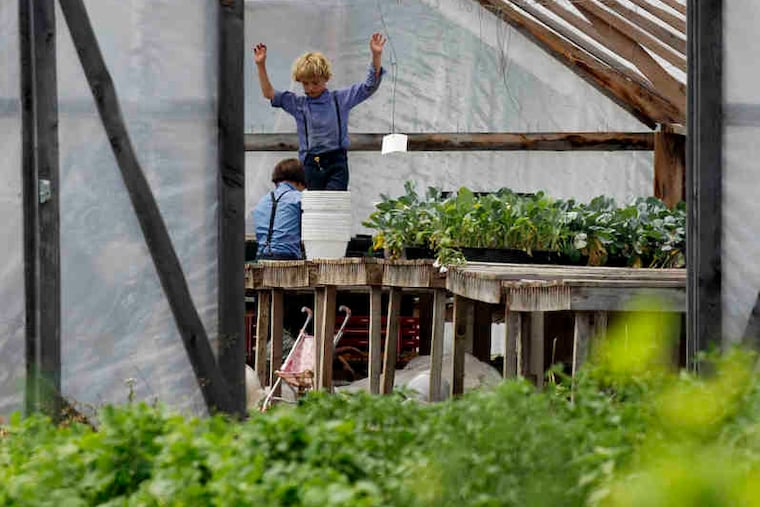Amish thrive in New York
Cheap, remote farmland increases the population by a third in two years.

HARRISBURG - Affordable farmland and proximity to traditional population centers are driving a boomlet in Amish colonies in New York state, according to a new study.
The Amish, many from Ohio or Pennsylvania, have established 10 settlements in New York since the start of 2010, growth that doubles that in any other state. Total population there has grown nearly a third in two years, to 13,000.
The first Amish districts in New York were established in the Conewango Valley in 1949, but migration there amounted to a trickle until about a decade ago. As recently as 1991, just 3,900 Amish were in the state.
Amish movement into New York has been fueled in part by word of mouth from families who have found productive and underpriced land, an attractive climate and growing season, and congenial neighbors and local officials, said Elizabethtown College professor Donald B. Kraybill, who directed the study by the Young Center for Anabaptist and Pietist Studies.
In the 1980s and '90s, Kentucky played that role for the Amish, and more recently it was Wisconsin, said Kraybill, an expert on Amish life.
Rural land is cheaper in New York than in Pennsylvania and Ohio, states that together account for nearly half the nationwide Amish population of about 261,000 in 28 states. Upstate New York also has more remote areas, Kraybill said.
"If you want to get away from the suburbs and the high-tech world, there are more places to hide in New York," he said.
New York, Kentucky, Illinois, and Kansas have experienced the largest net gain in Amish households since 2006, the study found.
The largest net losers were Pennsylvania, Wisconsin, Delaware, and Ohio, though their Amish populations can grow even if they lose households because the families typically have many children.
The Amish began arriving in Pennsylvania from Switzerland and Germany nearly 400 years ago. While their Christian beliefs and practices can vary from settlement to settlement or church to church, they were defined for study purposes as people who use horse-and-buggy transportation and speak a dialect of Pennsylvania German or Swiss German.
"It's remarkable that a horse-and-buggy people like the Amish are thriving in the midst of high-tech, Twitter America," Kraybill said.
In some areas of concentrated Amish populations in Pennsylvania, such as Lancaster County, residential and commercial growth can leave little room for their ways of life, so the Amish may decide to hire a tractor-trailer and head for someplace more remote.
Large Amish families may move to find farmland for younger generations or to preserve traditional aspects of their family life and resolve disputes over church rules, said Karen Johnson-Weiner, an anthropology professor at the State University of New York at Potsdam.
"The Amish moving to New York are going to be, for the most part, very conservative," said Johnson-Weiner, whose book on the state's Amish was published last year. "That means they're not going to be so willing to compromise or fit in."
The Amish have been involved in disputes in New York over zoning, construction practices, and electronic filing of sales taxes, while some areas have capitalized on Amish communities for tourism.
Johnson-Weiner said some new Amish arrivals were buying land that had not been farmed since early in the 20th century.
"The families farming those farms are ready to retire, and there aren't any young people ready to take the farm over, so you sell to the Amish," she said. "They're revitalizing farming, I would say, in many of those areas."
Amish migration often consists of younger couples looking for cheaper farmland or new locations to set up small businesses, Kraybill said. It can cost just a few thousand dollars to start making furniture or quilts, for example, he said.
Other Amish migrants can be multigenerational families moving together so they can afford to buy several adjacent farms.
Prime farmland in Lancaster County costs about $15,000 an acre, compared with $2,000 an acre in other states, Kraybill said.
Pennsylvania had the nation's largest Amish population in the new survey, just over 61,000, edging Ohio by about 400. Indiana ranked third at 46,000, Wisconsin fourth at 16,000, and New York fifth.